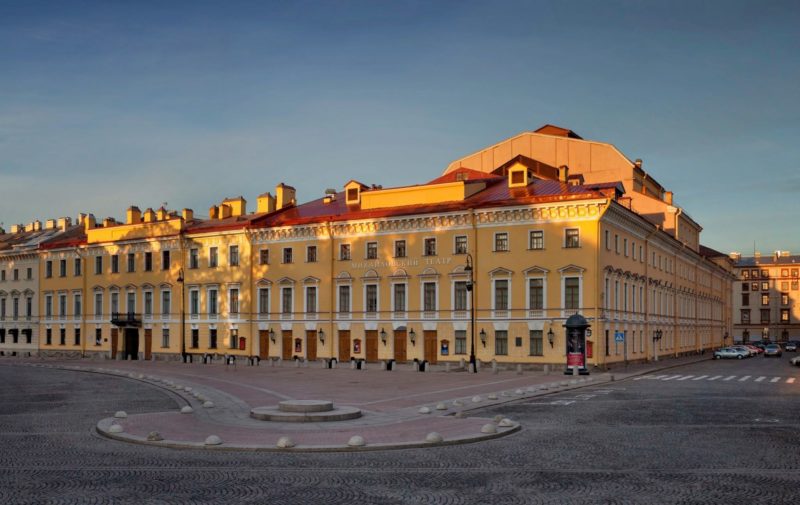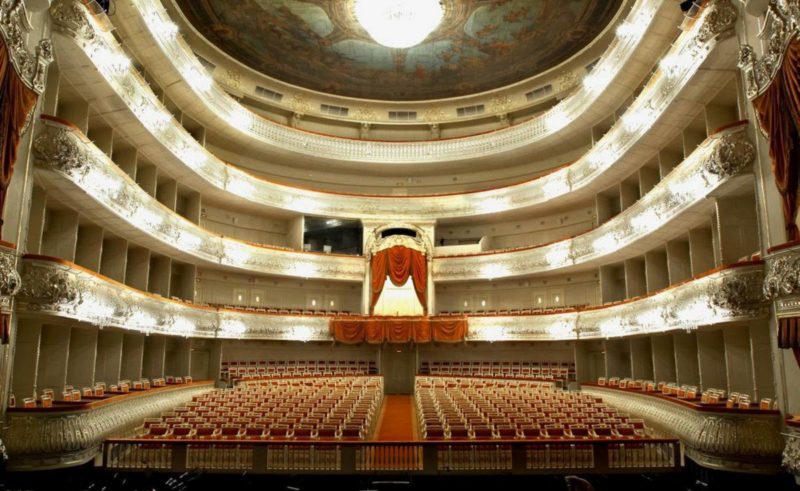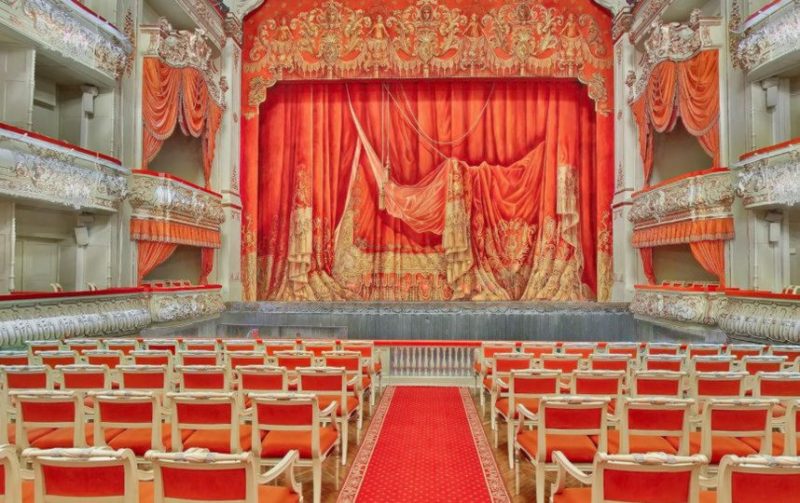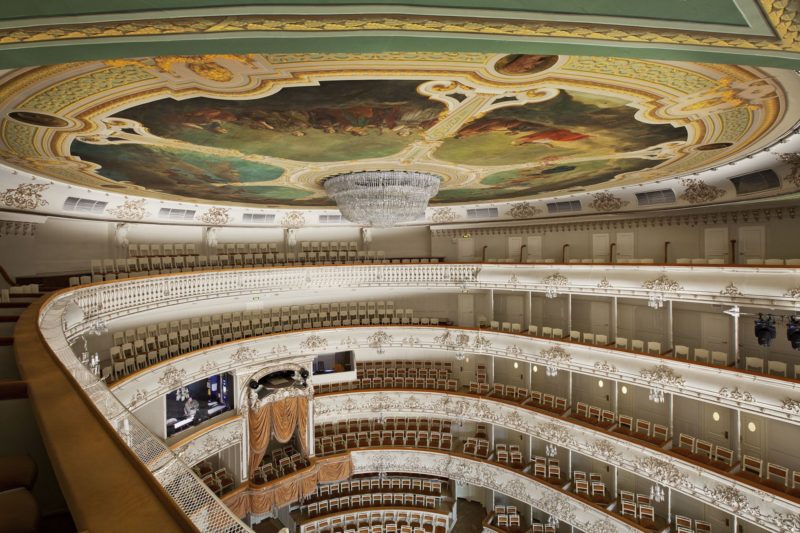Mikhailovsky Theatre in St Petersburg

In 1833, by the Order of Nicholas I, it was approved to remake the residence of Michael (the son of Paul I) into a chamber stage for the reception of high-ranking guests from among the imperial relatives and rulers of foreign countries.
The historic theater building was designed by Alexander Pavlovich Bryullov - the brother of the famous Russian painter. The ensemble of the Square of Arts, which had been fully formed by that time, demanded non-standard approaches from the architect. And Alexander Pavlovich used the sketches of Karl Rossi as the initial idea for the facade, according to whose projects both the Mikhailovsky Palace and the Musical Comedy Theater were built.
At the end of construction in 1833, the St. Petersburg public was somewhat disappointed - from the facade the Mikhailovsky Theater was very laconic, if not to say poor.

The fact that this three-story building is intended for theatrical needs can only be understood by the towering dome of the stage. In fact, all the magnificence of Alexander Pavlovich put inside. Here, the admiring gaze of the guests presents a huge amount of gilding, and luxurious velvet chairs, and many mirrors, and, of course, the scene. Named in honor of the Grand Duke Mikhail Pavlovich, the Mikhailovsky Theater was a chamber stage at the Mikhailovsky Palace, which often included the imperial family and foreign guests of the royal couple.
In 1859, the architect Alberto Cavos, who had already built Mariinka by that time, took up the reorganization of Mikhailovsky. The scene gets bigger, another tier appears in the auditorium, and on the ceiling by the artist Giovanni Buzatto, the ceiling “Victory of the forces of education and science over the dark forces of ignorance” is written, which still exists.

Before the revolution, there was no troupe of its own in the Mikhailovsky Theater, but this does not mean at all that the performances were held here from time to time. Invited bands from France and Germany constantly performed at the venue, and the troupe of the Imperial theaters did not stage their own performances very often. His own acting group appeared here only in 1918.
It was with his own troupe that the then leader Samuil Samosud brings to the stage the opera Nos and Lady Macbeth of Mtsensk County Dmitry Shostakovich and the pioneering Queen of Spades of Vsevolod Meyerhold. After the war, Sergei Prokofiev’s War and Peace was put on the stage for the first time.
Johann Strauss himself often stood at Mikhailovsky's conductor's stand, in different years Matilda Kshesinskaya, Tatiana Karsavina, Fyodor Chaliapin performed here, Sarah Bernard herself went on tour with her team. Alexander Sergeevich Pushkin, Lev Nikolayevich Tolstoy, Pyotr Ilyich Tchaikovsky and other great Petersburgers became regular guests of the performances.

Today, a troupe that has gained experience from leaders such as Farukh Ruzimatov, Nacho Duato, Elena Obraztsova, and Vasily Barkhatov over several years is a very strong team that can be performed on any scale. There is a “Mikhailovsky Friends' Club” at the theater, which anyone can join: here you can learn interesting things from the history of Mikhailovsky, go backstage at the theater.
The Mikhailovsky Theater of our days is a unique symbiosis of loyalty to the age-old traditions of the Russian musical theater and the elegant pursuit of new trends in modern theatrical art. This brought Mikhailovsky fame most secular theater in 2007. The current director of the theater is V.A. Kekhman initiated a grand renovation, which he personally financed. With the filing of the same director, the theater troupe heads the most eminent conductors, choreographers and directors of the world. The leading European and American educators are regularly invited here, who are called to conduct master classes for beginning theater artists, share their experience and skills with its leaders.
The repertoire of the theater a variety of productions. The most attention here is given to plays that are considered classics of the 19th and 20th centuries, but were never presented on the Russian stage. Special attention is paid to the development of children's repertoire.